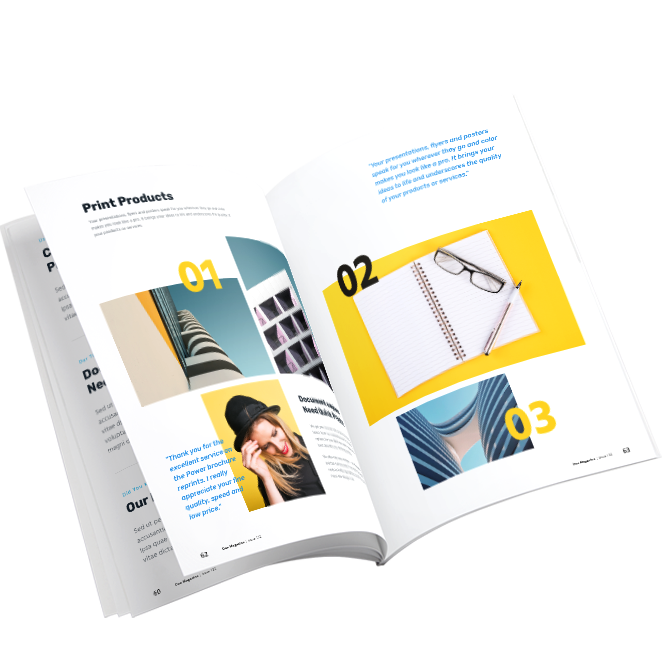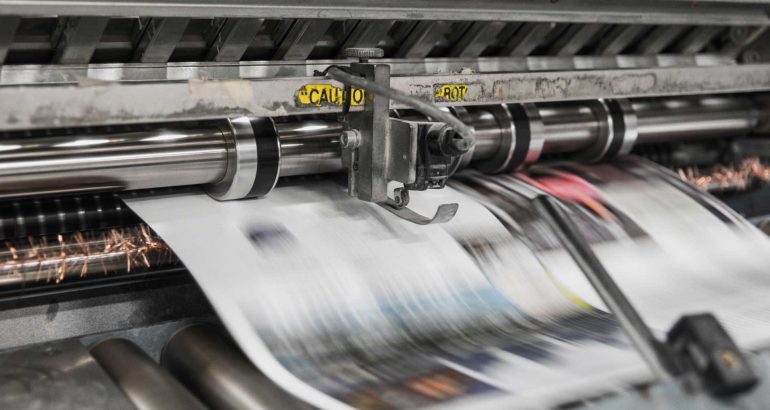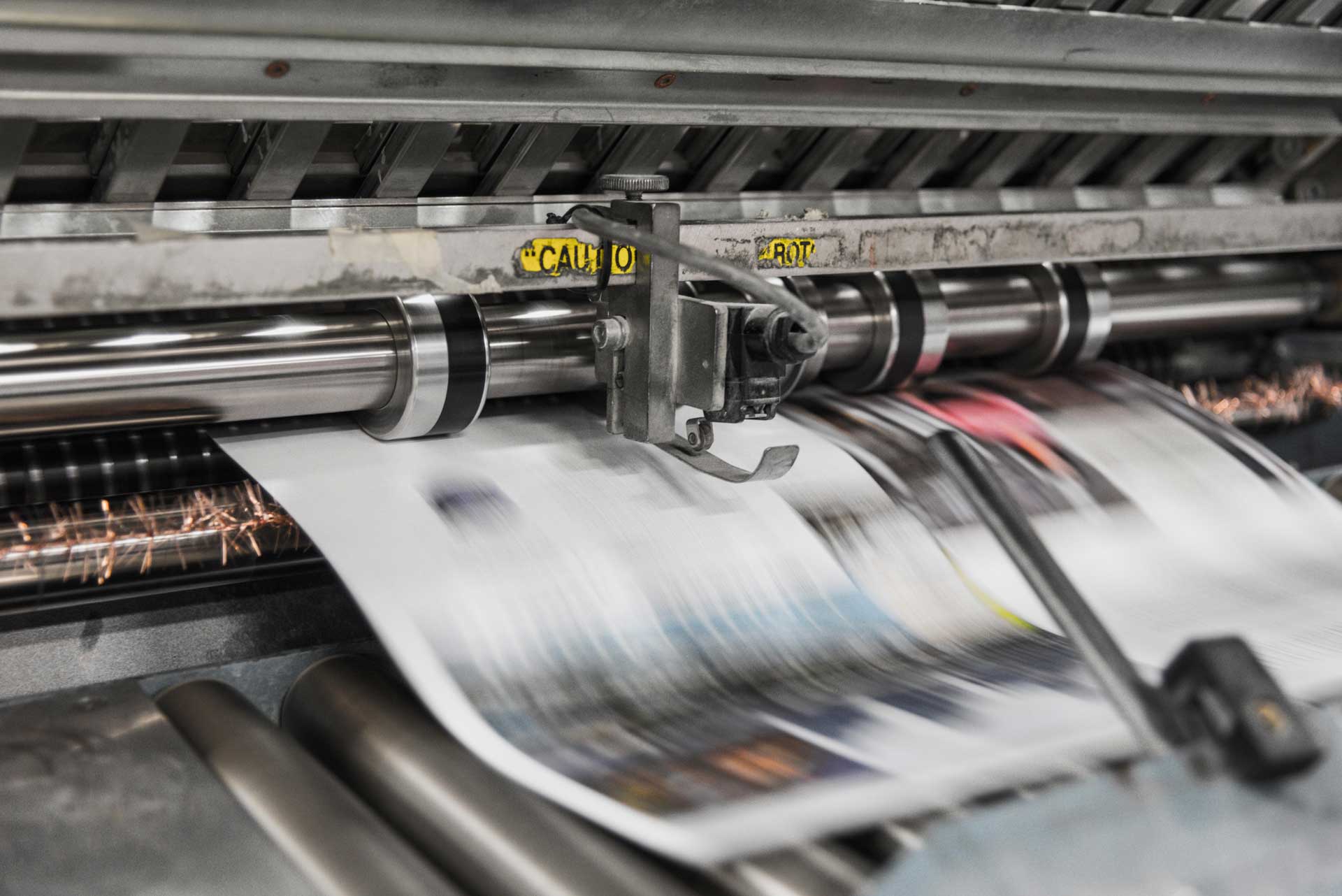Why is Print Media Important?
With social media, email and endless scrolling on Google, it’s easy to dismiss print media as a thing of the past. But, while digital reigns supreme in many areas, print still holds a unique power – a tangible connection that digital media just can’t replicate.
So, what exactly is print media?
Simply put, print media encompasses any form of communication that’s physically printed on paper. We’re talking newspapers, magazines, books, brochures, flyers, posters – the list goes on.
In this guide, we explore:
- What is print media?
- Importance of print media
- Advantages of print media
- Print media examples
Let’s jump in.
What is Print Media?
Print media is a traditional form of mass communication that utilises physical printed materials to distribute information and entertainment to a wide audience. This medium has been around for centuries, with the earliest forms dating back to ancient civilisations.
Print media encompasses a variety of formats, including newspapers, magazines, books, brochures, and pamphlets. These publications are typically produced on paper using printing presses or other printing technologies.

Newspapers are a staple of print media, providing daily or weekly coverage of local, national, and international news. Magazines offer in-depth articles and features on a variety of topics, while books provide longer-form narratives and information.
Print media has played a crucial role in shaping public opinion, disseminating knowledge, and fostering cultural exchange.
While digital media has become increasingly popular in recent years, print media continues to hold a significant place in society, particularly for in-depth reporting, analysis, and preservation of information.
The Importance of Print Media
Print media remains vital despite the digital surge we see today. Print media is certainly not dead and not going anywhere, either.
It offers a tangible experience, fostering deeper engagement with content. Print publications often provide in-depth analysis and investigative reporting, contributing to informed public discourse.
Moreover, print media holds a sense of credibility and permanence, serving as a reliable source of information.
Local newspapers play a crucial role in community building, while magazines cater to diverse interests. Print media also serves as a historical record, preserving knowledge and culture for future generations.
The primary goal of marketing collateral is to provide potential customers with valuable information about your products or services, ultimately driving them towards a purchase decision.

At Image Box Design, we offer print design and marketing collateral for any design projects you may have. From advertising design and brochures to logo design and branding, we can help. Get in touch or take a look at our graphic design portfolio.
Advantages of Print Media
We know that digital media has undoubtedly transformed the media landscape, but print media continues to hold a significant place, offering many benefits that cater to specific needs and preferences.
Of course, print isn’t without its challenges. It’s not as easily measurable as digital, and it can be more expensive to produce. But the key is to see print and digital as complementary, not competing, forces.
A smart marketing strategy leverages the strengths of both, using print to build brand awareness and create a lasting impression, while digital drives traffic and measures results.
Here are some of the advantages of print media:
1. Tangibility and Credibility
Unlike fleeting digital content, print media offers a tangible experience. Readers can hold it, feel the paper, and even appreciate the smell of ink. This physicality creates a stronger connection and often lends a sense of credibility that digital media sometimes lacks.
2. In-Depth Information and Analysis
Print publications, especially newspapers and magazines, often provide more in-depth reporting, analysis, and commentary than their online counterparts. This allows for a deeper understanding of complex issues and fosters critical thinking.
3. Targeted Reach
Print media can be highly targeted. Publications often cater to specific demographics, interests, or geographic locations, allowing advertisers to reach their desired audience effectively.
4. Less Competition
In a world saturated with digital content, print media offers a less cluttered environment. Ads in print publications may face less competition for attention compared to online ads, potentially leading to higher engagement rates.
5. Lasting Impact
Print media has a longer lifespan than digital content. Magazines and newspapers can be kept and referred to multiple times, extending their reach and impact.
6. Community Building
Local newspapers and publications play a vital role in fostering community spirit by providing local news, events, and information that connects people and strengthens social bonds.
7. Preservation of Information
Print media serves as a historical record, preserving information and knowledge for future generations. Libraries and archives rely heavily on print materials for research and historical documentation.
Read our guide for more information: 12 Key Advantages of Print Advertising

Print Media Examples
Here are some common examples of print media:
- Newspapers: These are publications that are printed daily or weekly and contain news, articles, and advertisements. Examples include The New York Times, The Washington Post, and your local city newspaper.
- Magazines: Magazines are published less frequently than newspapers (weekly, monthly, quarterly) and often focus on specific topics or interests, such as fashion, sports, or current affairs. Examples include Vogue, Sports Illustrated, and Time magazine.
- Books: Books are longer-form publications that can be fiction or non-fiction. They are typically bound and have a cover. Examples include novels, textbooks, biographies, and cookbooks.
- Brochures and pamphlets: These are smaller, unbound publications that are often used for advertising or informational purposes. They might be used to promote a business, event, or cause.
- Flyers and leaflets: These are similar to brochures but are usually smaller and less formal. They are often used to distribute information quickly and cheaply, such as for local events or promotions.
- Posters: Posters are large printed sheets that are used for display, often to advertise events or products. They can also be used for decorative purposes.
- Newsletters: Newsletters are publications that are typically sent regularly to a specific audience, such as members of an organisation or subscribers to a service. They often contain news, updates, and information related to the organisation or topic.
Looking for a Graphic Designer For Your Print Media?
At Image Box Design, we help brands and businesses across the UK with their marketing collateral from print to digital media. If you’re looking for print design, branding, logo design, print management, brochure design or creative illustrations, reach out to our team for a quote.
Get in touch with us today to find out how we can help with your project!
FAQs
What is the definition of print media?
Traditional print media is a form of communication using physical media like newspapers and magazines. It offers a tactile experience and physical presence, unlike its digital counterpart. Even in the digital age, print advertising remains a valuable part of a comprehensive marketing strategy for many local businesses.
What is the main purpose of print media?
Print media’s main purpose is to inform, entertain, and persuade. It allows marketers to reach a target audience with targeted content. Direct mail campaigns and print marketing, including billboards and direct mail, can create a lasting impression, especially for specific interests, and drive potential customers to retail stores or online sales.
What is non-print media?
Non-print media encompasses various forms of communication without a physical print component. This includes digital media like social media, blogs, and audio content. While the rise of digital media has changed media consumption habits, print media still provides a sense of trust and a tangible connection that digital marketing sometimes lacks. QR codes can bridge the gap, linking print to digital media assets.
Related Guides:
- What is Print Design?
- What is Graphic Illustration?
- What Is Business Stationery?
- 12 Key Advantages of Print Advertising
- What Makes a Good Poster?
- What is Brand Identity?
- What is Vehicle Livery Design?
- What is Graphic Design?
- What is Logo Design?
- What is an Infographic?
- Why Branding is Important for Your Businesses Success
- 10 Signs Your Business Needs a Rebrand
- 7 Reasons Why Typography is Important
- 15 Tips For Choosing The Best Graphic Design Company
- 17+ Reasons Why Graphic Design is Important for Businesses
- How to Make a Magazine



